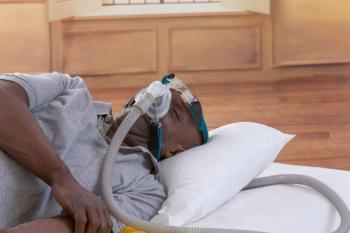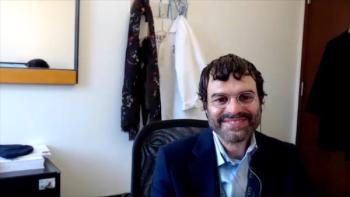
Physician Bias in Shared Decision Making - Can It Be Resolved?
Shared decision making is the epitome of patient-centered care. But do physicians really understand the process? At the National Comprehensive Cancer Network 21st Annual Conference, Peter A. Ubel, MD, associate director, Health Sector Management, The Fuqua School of Business, Duke University, addressed the topic using a prostate cancer scenario.
“Shared decision making is extremely important when guidelines may not help,” said Ubel. In prostate cancer patients, the treatment could wither be active surveillance or active treatment (including radiation or surgery). “How do we figure which treatment is suitable for which patient?” Ubel emphasized the need for communication between the patient and the doctor. In his opinion, the doctor can present the available options and their implications to the patient and guide the process. But the final decision should be left to the patient.
He presented several examples of recorded conversations between urologists and their patients, based on the study that he and his colleagues had conducted. They found that the language used by physicians to convey options and opinions can significantly create a bias in the patient’s choice of care.
Ubel and his team provided urology patients with booklets informing them of their options at the biopsy stage, when were not as yet familiar with their diagnosis. When patients came back to the clinic after their biopsy results were in, the team recorded the discussions during the consult as the patient and his oncologist figured out the best treatment options. Ubel’s research team used a set of evaluation criteria to measure the extent of shared decisions involved in choosing treatment, including decision role, decision context, alternatives, and risks and benefits.
An important question that Ubel brought up was “When is the best time to bring up the discussion of treatment options with the patients?” Right after breaking the news of their cancer diagnosis is the worst time to discuss treatment alternatives with patients, Ubel said, because the shock of their diagnosis probably numbs patients from absorbing any of the subsequent information that they are presented with. Another caveat is how much information is too much? Information overload can sometimes reduce the impact of the message, Ubel said, adding that information overload in the shared decision making process can result in the patient hugely relying on the doctor’s opinion, which defeats the objective.
If physicians are biased toward a certain treatment, it could take a very assertive patient to push back and hold his own to ensure all options remain on the table to choose from. “Physician’s recommendations are taken as a medical fact,” said Ubel, which may not always be. Physicians could lean towards an option, but not necessarily recommend one, Ubel continued. They should also gauge how keen the patient is with being involved in making the decision or would he rather just take the doctor’s advice.
Ubel had 2 take-home points for the doctors in the audience with respect to shared decision making:
Step 1: Teach back
- Don’t assume patients understand decision-relevant information. Ask them to narrate out aloud the information you shared with them.
Step 2: Diagnose patient preferences
- Understand the patients and their preferences before recommending care regimens.
Newsletter
Stay ahead of policy, cost, and value—subscribe to AJMC for expert insights at the intersection of clinical care and health economics.













































